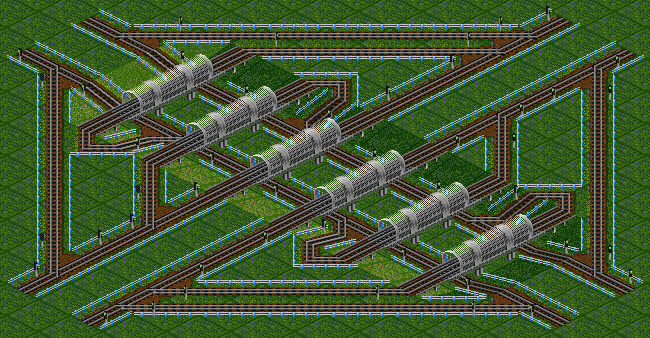


This means that if the station is full the first signal will still show red, even though there is no train on the next piece of track. Things are made slightly more clever by the use of those colour-coded signals: the signal with the yellow horizontal bar only shows green if at least one of the signals after it with the white vertical bar is green. Not particularly efficient if you have a lot of traffic, since trains leaving stop trains coming in, and vice versa. A two-way railway line (one in, one out) ending in a small terminus station. This is pretty much as simple as you can get. Here, then, are some screenshots of some junctions I have just built for demonstration purposes. But rather than quietly indulge in my own private geekiness I opted to share my obsession with the world. Having recently installed the Mac version of OpenTTD (which is the open-source release of Transport Tycoon Deluxe) I have been reliving my wasted youth building expansive rail networks with complex junctions and sprawling airports. Over a decade later and the game has been ported to other platforms, developed almost beyond recognition, and has a cult following of enthusiasts still hooked by the thrill of the money-spinning construction game. Years ago, long before the likes of Rollercoaster Tycoon came on the scene, Chris Sawyer released Transport Tycoon for the PC, a DOS-based game working on an isometric grid where the player created complex transport networks between industries and towns.


 0 kommentar(er)
0 kommentar(er)
